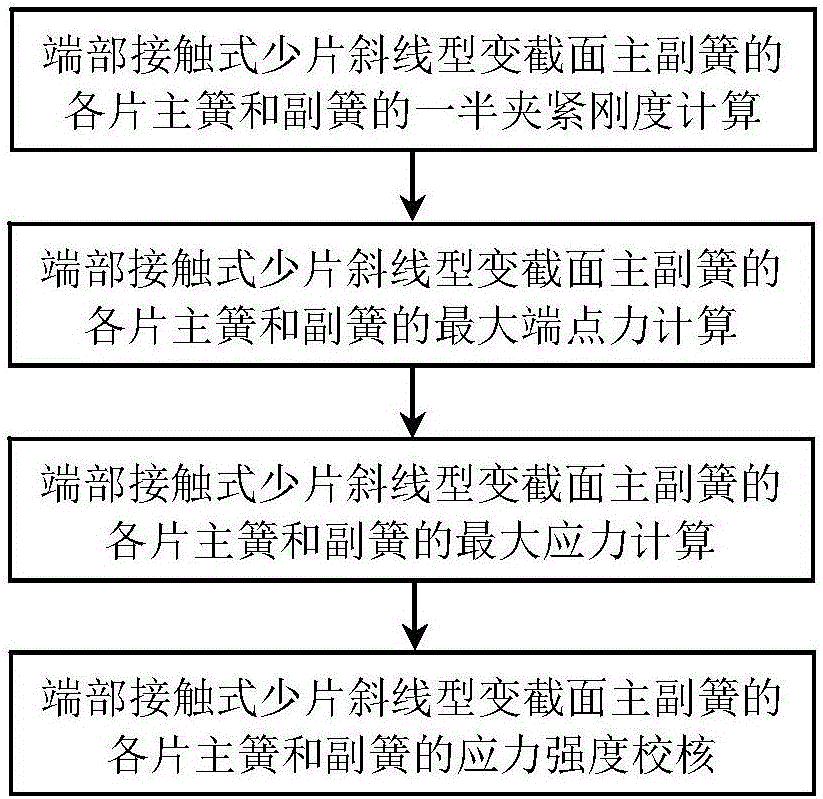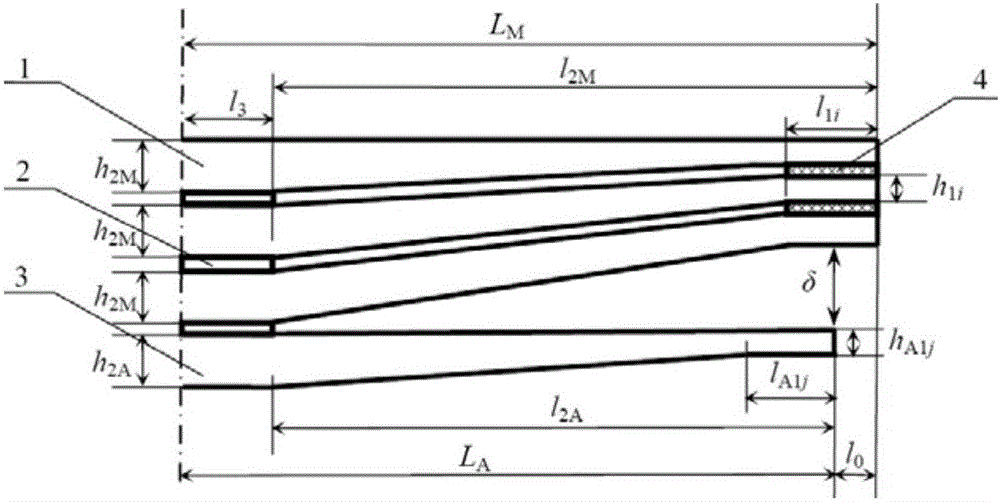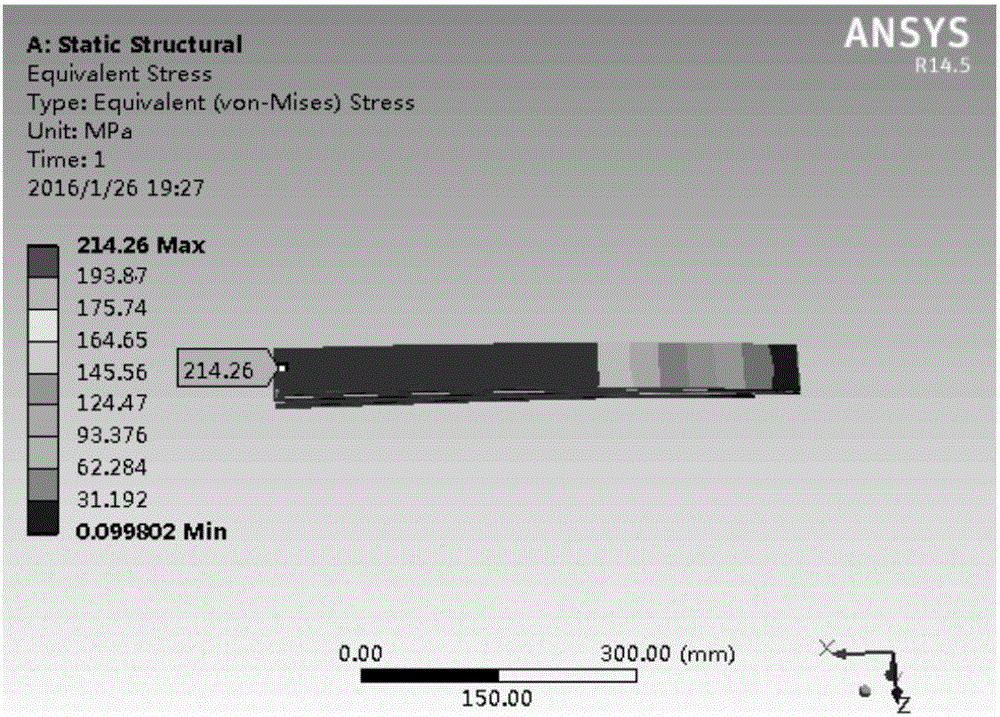Method for verifying strength of each leaf of end contact type few-leaf oblique main and auxiliary springs
A main and auxiliary spring, contact technology, applied in special data processing applications, instruments, electrical digital data processing, etc., can solve the problem of complex calculation of the maximum stress of the main and auxiliary springs with a few slashes and variable cross-sections.
- Summary
- Abstract
- Description
- Claims
- Application Information
AI Technical Summary
Problems solved by technology
Method used
Image
Examples
Embodiment
[0065] Embodiment: The number of main reeds m=2 of a certain end-contact type few-piece slanted-line variable-section main and auxiliary springs, wherein, half the length L of each main spring M =575mm, width b=60mm, elastic modulus E=200GPa, half of the installation distance l 3 =55mm, the thickness h of the straight section at the root of each main spring 2M =11mm, the distance l from the root of the oblique line to the end of the main spring 2M = L M -l 3 =520mm; the thickness of the straight section at the end of the first main spring is h 11 = 7mm, the thickness ratio of the oblique line section of the first main spring is β 1 = h 11 / h 2M =0.64; the thickness of the straight section at the end of the second main spring is h 12 = 6mm, the thickness ratio of the oblique line section of the second main spring to β 2 = h 12 / h 2M = 0.55. The number of sheets of secondary spring n=1, half the length L of the secondary spring A =525mm, the horizontal distance l bet...
PUM
 Login to View More
Login to View More Abstract
Description
Claims
Application Information
 Login to View More
Login to View More - R&D
- Intellectual Property
- Life Sciences
- Materials
- Tech Scout
- Unparalleled Data Quality
- Higher Quality Content
- 60% Fewer Hallucinations
Browse by: Latest US Patents, China's latest patents, Technical Efficacy Thesaurus, Application Domain, Technology Topic, Popular Technical Reports.
© 2025 PatSnap. All rights reserved.Legal|Privacy policy|Modern Slavery Act Transparency Statement|Sitemap|About US| Contact US: help@patsnap.com



